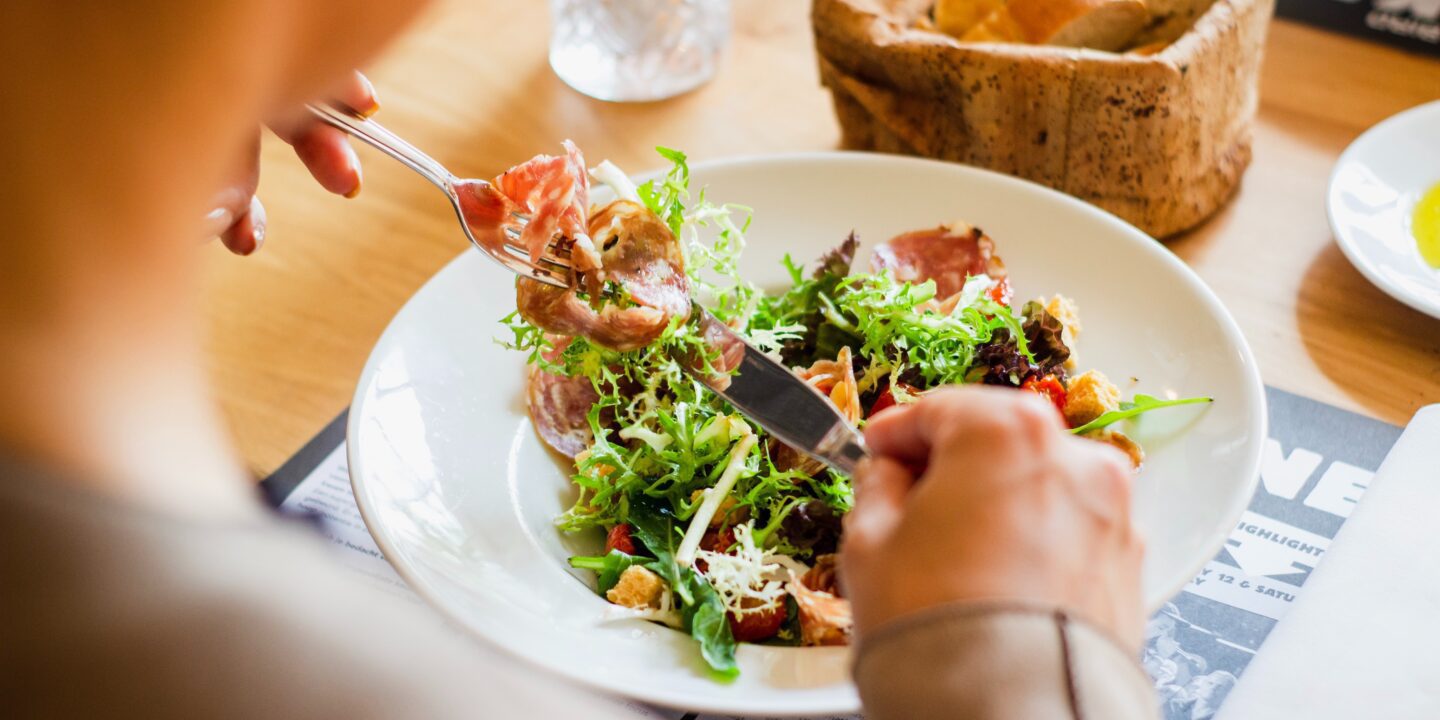
In the culinary world, flavor may be king, but presentation is the crown that enhances the entire dining experience. The art of plating—how a dish is arranged and styled on a plate—goes far beyond aesthetics. It has the power to transform a good dish into an unforgettable one, leaving a lasting impression even before the first bite. From high-end restaurants to home kitchens, mastering the art of plating can elevate your meals to a whole new level.
Why Presentation Matters
When you walk into a restaurant and a dish is placed in front of you, what’s the first thing you notice? It’s not the aroma or even the taste—it’s how the food looks. Humans are visual creatures, and our perception of taste begins with our eyes. A beautifully plated dish sets expectations. It prepares the palate, stirs emotions, and builds anticipation.
In fact, research shows that diners perceive well-presented food as more flavorful and satisfying. A study conducted by Oxford University found that participants rated a salad arranged artistically as tasting better than the same ingredients tossed together. This phenomenon is part of what psychologists call “visual taste”—the idea that we experience food through all our senses, especially sight.
The Psychological Power of Plating
A carefully plated dish communicates care, thoughtfulness, and craftsmanship. Just as a well-dressed individual makes a strong first impression, a well-composed dish signals quality and intent. The symmetry, color balance, portioning, and even negative space on a plate all contribute to our perception of the meal.
When food looks appealing, it triggers a response in the brain that enhances appetite and increases dopamine—the “feel good” chemical. This effect is particularly powerful in fine dining, where chefs use plating to create a narrative or evoke emotion. Whether it’s nostalgia, surprise, or elegance, a thoughtfully plated dish can tell a story.
The Foundations of Plating
To master the art of plating, one must understand its foundational elements. While creativity plays a significant role, there are core principles that help guide successful plating.
1. Balance
Balance refers to the distribution of components on the plate. This can mean balancing flavors—sweet, salty, acidic, and bitter—as well as textures, colors, and portion sizes. Visually, balance helps prevent a dish from looking overcrowded or too sparse.
Tips for balance:
- Distribute elements evenly but not symmetrically to create visual interest.
- Use contrasting colors and textures.
- Avoid piling everything in the center—let each element shine.
2. Focal Point
Every plate needs a focal point—the element that draws the eye. This is often the main protein or the hero ingredient. Supporting elements like sauces, garnishes, and sides should complement and frame this centerpiece, not compete with it.
Tips for focus:
- Use height or positioning to highlight the focal point.
- Keep it simple—don’t overwhelm the plate with too many elements.
- Use white space to guide the viewer’s gaze toward the star of the dish.
3. Color and Contrast
Color brings vibrancy and emotion to a dish. A colorful plate looks fresh, exciting, and appetizing. Contrast helps define elements, making each component pop.
Tips for color:
- Use a mix of natural, vibrant ingredients like herbs, vegetables, and edible flowers.
- Consider complementary colors (e.g., orange and purple, red and green).
- Don’t shy away from monochrome plating—it can be dramatic and elegant if done right.
4. Texture
Texture isn’t just about how food feels in the mouth—it also affects visual appeal. Crispy, creamy, crunchy, or silky textures add depth to the dish and make it more engaging to the senses.
Tips for texture:
- Add crispy elements like fried shallots or toasted seeds for contrast.
- Use sauces and purees to add smoothness and moisture.
- Avoid sogginess—crisp ingredients should be added last.
5. Negative Space
Negative space, or the empty area on a plate, is essential in framing food and preventing visual clutter. It gives the dish room to breathe and directs the eye to key elements.
Tips for using negative space:
- Don’t fill the entire plate—use space intentionally.
- Plate off-center for a modern, artistic feel.
- Use small portions on large plates to create elegance and refinement.
Plating Techniques That Make an Impact
Now that we understand the principles, let’s explore some practical techniques that chefs use to create stunning plates.
1. Layering and Stacking
Creating height gives dimension to your dish. This technique involves layering ingredients or stacking components in an organized way. It adds elegance and draws attention to texture.
Example: Stack roasted vegetables over a puree and top with a protein, finishing with microgreens.
2. Sauce Art
Instead of just pouring sauce onto the plate, use it as a visual tool. Chefs often drizzle, brush, or dot sauces to create a dynamic look.
Tools to try: Squeeze bottles, brushes, or the back of a spoon.
3. Ring Molds and Cutters
Ring molds allow for precision, helping you shape elements like grains, tartares, or mashed potatoes into neat circles. This creates a clean, uniform look that elevates the dish’s appearance.
4. Use of Unconventional Serving Vessels
Modern plating isn’t restricted to flat plates. Bowls, wooden boards, slate tiles, and even glass domes can offer visual intrigue. The vessel becomes part of the storytelling.
Example: Serving ceviche in a coconut shell or risotto in a hollowed-out squash.
5. Microgreens and Edible Flowers
These finishing touches add a burst of color, a delicate texture, and often a hint of flavor. Use sparingly to garnish the plate, giving it finesse and personality.
Cultural Interpretations of Plating
Plating styles can also reflect regional and cultural influences. Different cuisines bring unique aesthetics and philosophies to the table.
Japanese Kaiseki
In Japanese cuisine, balance and seasonality are key. Kaiseki—the traditional multi-course meal—is known for its elegant minimalism. Each plate is carefully curated to reflect nature, often with asymmetry and a reverence for the ingredients’ natural shapes.
French Haute Cuisine
Classic French plating emphasizes symmetry, richness, and precision. The sauces are often bold and the structure tight. Expect refined techniques and attention to every element, from the perfect quenelle to the exact placement of herbs.
Nordic Minimalism
Modern Nordic cuisine has embraced foraged ingredients and minimalistic plating. Think muted colors, earthy tones, and lots of negative space. The plating often mimics nature—raw, organic, and evocative of landscapes.
Rustic Farm-to-Table
Plating in rustic or farmhouse-style restaurants embraces warmth and abundance. It feels less structured and more heartfelt—showcasing ingredients in their natural form, often family-style or in large, generous portions.
Plating at Home: Tips for Everyday Elegance
You don’t have to be a Michelin-starred chef to plate like a pro. With a few simple tweaks, even everyday meals can look restaurant-worthy.
Choose the Right Plate
The plate is your canvas. Choose one that complements the dish. White plates are versatile and let the food shine, but dark or textured plates can add drama. Avoid overly patterned plates—they can distract from the food.
Use Smaller Portions
One of the easiest ways to make a plate look elegant is by scaling back the portion size and presenting it thoughtfully. You can always serve seconds.
Wipe the Rim
A clean rim makes a dish look polished. Always wipe away any drips or smudges before serving.
Think Odd Numbers
Plating components in odd numbers (like three scallops instead of two or four) is more visually appealing. It feels more natural and less rigid.
Plan Before You Plate
Take a moment to visualize the dish. Where will each component go? How will it look from above? Planning helps you avoid overcrowding or last-minute scrambling.
Social Media and the Rise of Plating Culture
In the age of Instagram, the visual aspect of food has never been more important. Diners now photograph their meals before tasting them, and chefs are adapting by making dishes more photogenic. Colorful sauces, precise plating, and creative garnishes are all part of the modern visual language of food.
However, the rise of social media has also led to some over-stylization—where looks take precedence over flavor. The best dishes strike a balance: visually stunning but still rooted in solid culinary technique and delicious taste.
The Future of Plating: Sustainability Meets Art
As the culinary world becomes more conscious of sustainability, the future of plating is evolving. Chefs are moving toward eco-conscious presentations, using edible garnishes instead of wasteful décor, and embracing minimalism over extravagance.
There’s also a growing interest in interactive plating, where diners participate in the final assembly—drizzling sauce, mixing components, or breaking edible shells. This adds a sense of playfulness and involvement that enhances the dining experience.
Conclusion
Plating is more than just arranging food on a plate—it’s a form of expression, an invitation, and a reflection of care. Whether you’re preparing a meal for guests or simply elevating a Tuesday night dinner, investing in presentation can make the experience more joyful and meaningful.
Great plating doesn’t require expensive tools or complex techniques. With mindfulness, creativity, and a bit of practice, anyone can transform their dishes from simple to sensational. After all, we eat with our eyes first—so why not make every meal a feast for the senses?





















